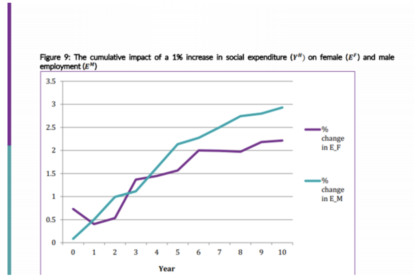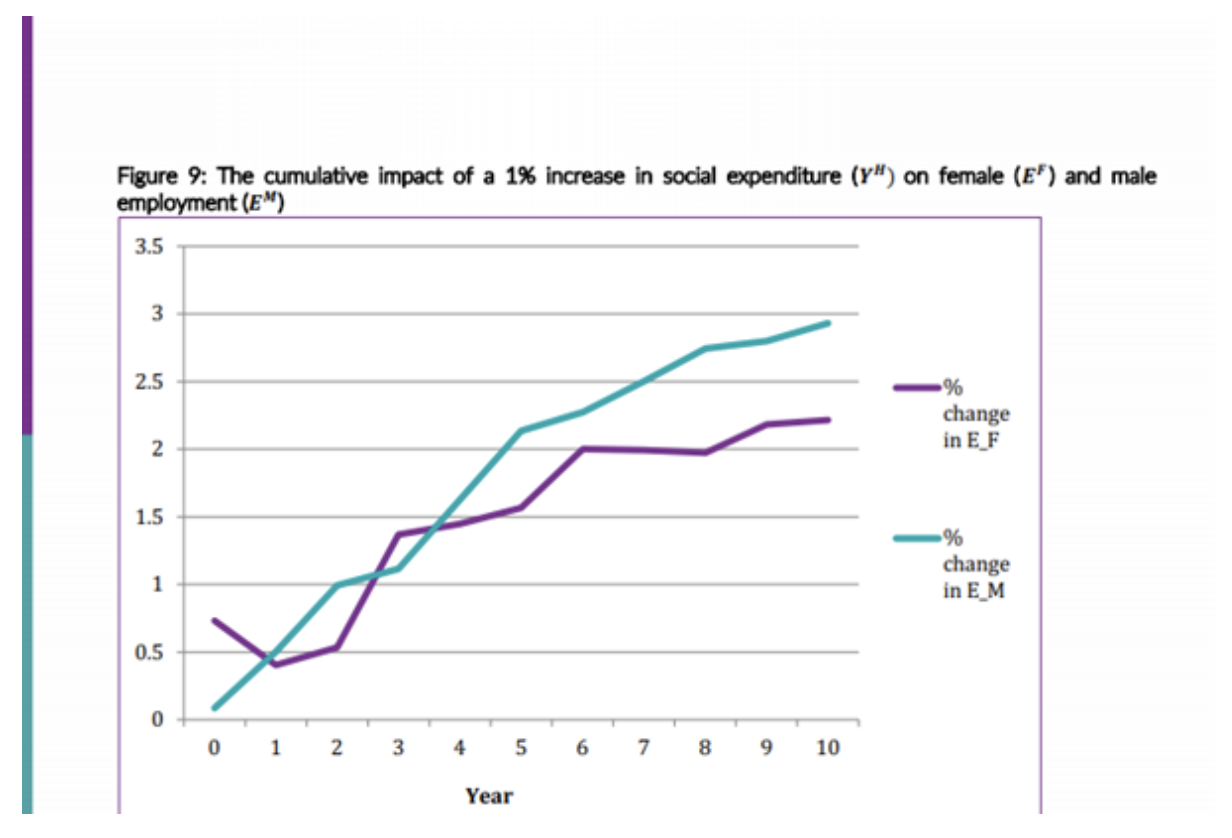
During the first week of June, the Center for Transnational Migration and Social Inclusion at Seoul University and the Care Work and the Economic Project at American University will host a conference to discuss the role of care work and the care economy in a post-pandemic future. National and international scholars will take this opportunity to discuss the role of public spending in gender equality, and its relation to economic growth.
In their paper “The Effects of Public Social Infrastructure and Gender Equality on Output and Employment: The Case of South Korea”, Oyvat and Onaran (2020) use a feminist post-Kaleckian model to estimate the impact of an increase in the total social infrastructure expenditure, wages, and closing the gender pay gap on output and employment. They find that an increase in South Korea’s public social expenditure has a positive cumulative effect on output, as well as on female and male employment (hours of work) in the non-agricultural sector, both in the short and medium terms (figure below).

(Oyvat and Onaran, 2020, p.29).
Pierre-Richard Agenor and Madina Agenor in “Access to Infrastructure, Women’s Time Allocation and Economic Growth” (2019) develop a two-period, gender-based overlapping generations model (OLG) with public capital to explore the implication of public infrastructure on women’s time allocation and growth. They find that government provision of infrastructure can induce women to reallocate time away from home production activities and toward market work, as well as have a significant impact on health and education for both men and women, positively affecting their productivity.
Finally, Ignacio Gonzalez, Bong Sun Seo and Maria S. Floro use a macroeconomic overlapping generations model (OLG) to incorporate long-term care and the provision of gender-based unpaid care in their paper “Norms, Gender Wage Gap and Long-Term Care” (2020). They consider the persistence of traditional gender norms as an explanation to the perpetuation of unequal distribution of care work across genders. The unfair division of unpaid care work increases the gender wage gap and creates gender-unequal equilibrium outcomes. They examine how investment in quality care services, care relevant infrastructure, and in encouragement of gender-egalitarian norms can play a role in reducing and redistributing the load of unpaid care work.
This blog was contributed by Carla (Anai) Herrera, Research Assistant for the Care Work and the Economy project.
Sources:
Agenor and Agenor (2019). “Access to infrastructure, women’s time allocation and economic growth” Care Work and the Economy (CWE-GAM), Program on Gender Analysis in Economics (PGAE), American University. DOI: 10.17606/8m8y-mp65
Gonzalez Garcia, Seo, and Floro (2020). “Norms, gender wage gap and long-term care” Care Work and the Economy (CWE-GAM), Program on Gender Analysis in Economics (PGAE), American University. https://doi.org/10.17606/7E2K-1508.
Oyvat, C. and O. Onaran (2020). “ The effect of public social infrastructure and gender equality on output and employment: The case of South Korea “ Care Work and the Economy (CWE-GAM), Program on Gender Analysis in Economics (PGAE), American University. DOI: 10.17606/fhq4-c294
